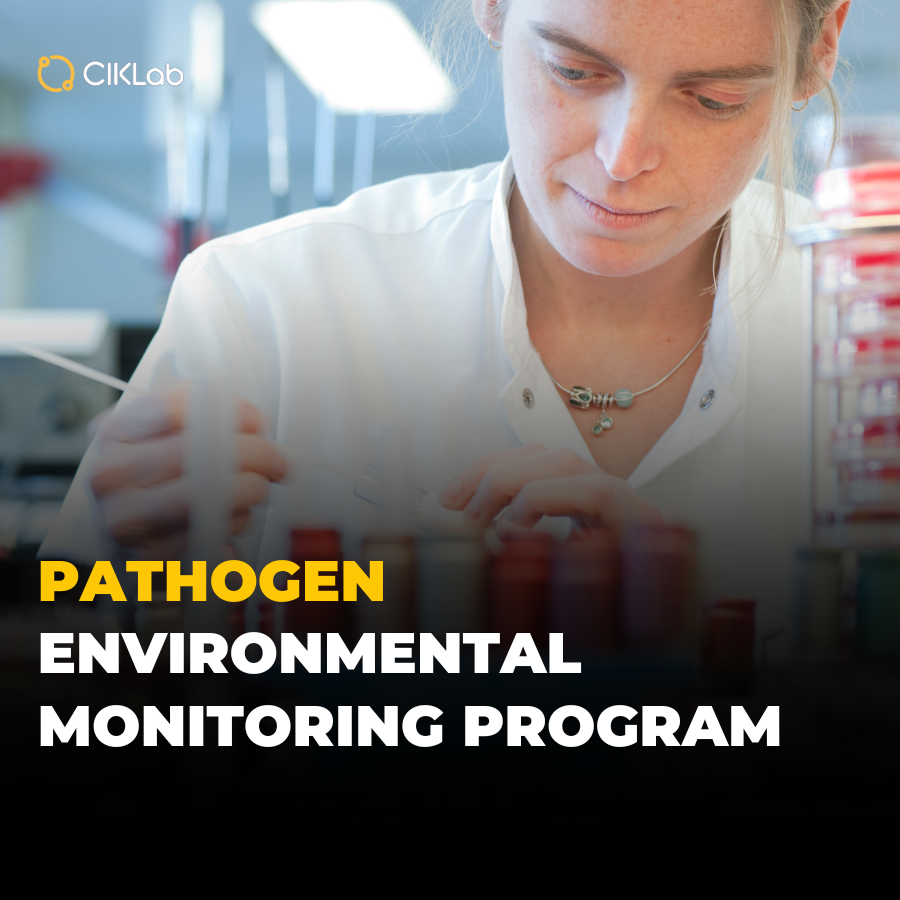HACCP (Hazard Analysis Critical Control Point) is one of the most recognized and widely used methods for assessing and reducing food safety risks in the agri-food industry.

Summary :
- HACCP has 7 principles but 12 steps !
- The method is structured around 7 main principles
- VACCP, TACCP - What are they ?
- How can a dedicated control software help you ?
- Useful Links !
For a little background, HACCP was developed in the 1960s by NASA for the production of food for astronauts—no error in space !
HACCP method is essential for studying and controlling the four major types of hazards in manufacturing processes and products:
- Biological
- Chemical
- Physical
- Allergenic
HACCP is not technically a standard but rather a tool that forms the basis for developing a food safety plan.
"Food business operators shall put in place, implement, and maintain one or more permanent procedures based on the HACCP principles."
EC 2004/852
HACCP has 7 principles but 12 steps!
Before starting the hazard analysis, there are other preliminary and fundamental principles to apply, known as Prerequisites. These include good hygiene practices, good manufacturing practices, staff training, cleaning operations, maintenance, etc.
Step 1: Form a dedicated team
Begin by forming a multidisciplinary team trained in food hygiene. The team should include a coordinator responsible for the team, ensuring the members' level of training and overseeing the plan's development. Typically, the QHSE (Quality, Health, Safety, and Environment) manager fulfills this role.
Step 2: Detailed product description
Write a complete and general description of your product, including ingredients, processing, packaging, storage, and distribution methods (frozen, ambient temperature, etc.). Do not omit any details at this stage as it is crucial for studying hazards and risks.
Step 3: Intended use
Describe the intended and foreseeable use of the food products, as well as the target market. For example, certain appetizer sausages may be intended to be heated but can also be consumed raw.
Step 4: Production flow diagram
Verify and validate the production flow diagram with the entire team in practice. Sometimes, the theory may reveal surprises when compared to the actual production process.
Step 5: Verification of the flow diagram
Vérifiez et confrontez sur le « terrain » et avec toute l’équipe la réalité du diagramme de fabrication, on peut avoir quelques surprises avec la théorie.
The method is structured around 7 main principles
...which are added to the first 5 steps.
Principle 1 - Hazard analysis:
This step involves identifying and evaluating hazards (probability of occurrence and severity of their adverse effects on health) related to food safety.
- Create a comprehensive list to identify hazards, using methods such as the 5M method or Ishikawa diagram (Environment, Method, Material, Manpower, Means) to cover all possibilities. Also, utilize recall history or the most recurring problems in your industry (RASFF) to support your analysis. Above all, inspect the process step on-site with the team, as many things can arise at this stage.
- Rate the severity and frequency of occurrence with the team, for example, on a scale of 1 to 5. Here is an example of rating:
FREQUENCY (F)*
| Quotation | Frequency | Comments |
| 1 | Exceptional, almost impossible. |
0 to 5% of the cases |
|
2 |
Rare |
6-15% of the cases |
| 3 | Possible |
16-50% of the cases |
| 4 | Very likely, frequent |
51-80% of the cases |
| 5 | Very frequent, possibly systematic |
81-100% of the cases |
| Quotation | Frequency | Comments |
| 1 | Negligible | Not serious for human consumption |
|
2 |
Marginal | Lower risks for the consumer |
| 3 | Serious | Many people affected, but reparable damages |
| 4 | Critical | Many people affected, long-term consequences |
| 5 | Catastrophic | Deadly. |
*"These quoting examples are just a few among many others; they need to be determined based on the company's experience and industry. Build them with your team.".
- Evaluate risks, risks allow characterizing hazards by taking into account severity (S), frequency (F) of occurrence. The risk's criticality (C) is determined by the product of severity and frequency, but you can also consider your ability to detect the hazard: detectability (D) in order to weigh the risk.
Criticality = Severity (S) x Frequency (F)
- Classify your hazards into 3 categories: Minor / Major / Critical
- Summarize all hazards with a criticality ≥ 9 (Major and Critical) and a severity of at least 3.
- Use the decision tree to determine if you are dealing with a CCP (Critical Control Point).
Principle 2 - Identification of Critical Control Points (CCP):
Determine critical control points where control and management are necessary to prevent, eliminate, or reduce any food safety hazards to an acceptable level: an uncontrolled CCP equals a hazardous product.
If following the Codex Alimentarius, every critical control point requires monitoring. The Codex decision tree ensures certainty in determining whether a CCP is present or not.
Principle 3 - Establishment of Critical Limits:
Establish critical limits for each CCP to ensure the effectiveness of control measures. For example, pasteurization (temperature + time combination).
Principle 4 - Implementation of CCP Monitoring:
Implement procedures to monitor CCPs. Once critical thresholds are defined, continuous verification of these limits is required, which can be quantified or measured in various ways: visually, through temperature measurements, or by a detector for metal particles.
Clearly define:
- Who performs the monitoring?
- How is the monitoring conducted?
- How are the monitoring results recorded?
- What happens when these limits are exceeded?
Principle 5 - Corrective Actions for Non-conformities:
Corrective actions aim to promptly address any loss of control over CCPs. These actions should be described, understandable, and applicable to the person(s) identifying the problem. They involve the manufacturing process (e.g., stopping, intervention) and the product (e.g., blocking, isolation).
Principle 6 - Verification of Effectiveness:
This is the well-known CHECK stage of the PDCA (Plan, Do, Check, Act) cycle. It involves regularly verifying that your HACCP system functions correctly. This includes conducting periodic inspections of facilities and equipment on-site, validation testing to confirm the effectiveness of control measures, and periodic evaluations of procedures and records. These verification activities ensure the cleanliness of facilities, compliance with Good Hygiene Practices (GHP), and the effectiveness of control measures.
Each modification should be considered by the HACCP team. For example, were there:
- Changes in suppliers?
- Changes in recipes?
- New cleaning products?
- Changes in cleaning procedures?
- Changes in temperature sensors or probes?
- And so on.
Principle 7 - Implementation of a Documented System:
It is essential to maintain up-to-date documentation and records to demonstrate and prove the implementation of measures and actions taken. This ensures traceability and transparency in food safety management through detailed documentation, such as:
- HACCP plan
- Verification procedures
- Product specifications
- Cleaning and disinfection instructions
- Emergency procedures
- And more.
Recordkeeping involves collecting and retaining relevant data on food safety-related activities, such as:
- Temperature records and instrument verification/calibration
- Cleaning records
- Audit reports
- Supplier evaluations
- Microbiological analysis results
- Allergen tests
- And more.
These records are a valuable source of data that can be utilized to improve your system!

VACCP, TACCP - What are they?
These two concepts, VACCP and TACCP, are closely related to HACCP and operate on the same principles. They emerged a few years ago with the IFS and BRC standards. This is what is called Food Defense.
While HACCP focuses on preventing and anticipating unintentional or accidental risks to food safety, TACCP and VACCP specifically address the intentional nature of the risk.
TACCP (Threat Assessment Critical Control Point):
TACCP aims to identify and control intentional threats (malicious acts) such as deliberate contamination of food products, sabotage of the production or supply chain, as well as the use of food for criminal or terrorist purposes.
VACCP (Vulnerability Assessment and Critical Control Point):
VACCP aims to identify intentional threats (frauds) motivated by economic gains. This can take the form of counterfeiting, substitution, dilution, concealment, etc. The health risk to consumers remains significant (e.g., melamine in Chinese infant formula).

How can a dedicated control software help you?
It is necessary to describe, document, and justify your hazard analysis, but it is crucial to be able to easily plan and track all analyses and controls for every manufacturing step.
CIKLab is an application specifically designed for food analyses. It offers features that allow you to track controls on products and production chains.
CIKLab provides numerous advantages for managing these controls:
Creation of systematic or periodic monitoring controls:CIKLab enables users to easily create custom controls and configure surveillance frequencies.
Assignment of reference methods or inspection techniques:The application also allows assigning reference methods or inspection techniques to each control. This ensures a standardized approach in evaluating the results.
Selection of control services (laboratory, production, logistics):CIKLab offers the ability to define who will be responsible for executing the control or measurement. Additionally, it facilitates the storage of all records associated with the performed controls, enhancing information and result traceability.
Establishment of critical limits or monitoring:For each analysis or control point, you can set critical limits or specifications to quickly detect deviations and take corrective or preventive actions.
Result history and control charts:CIKLab features a result history functionality, allowing you to study trends at any given time. It becomes possible to generate control charts to assess the performance and variations of each control.





